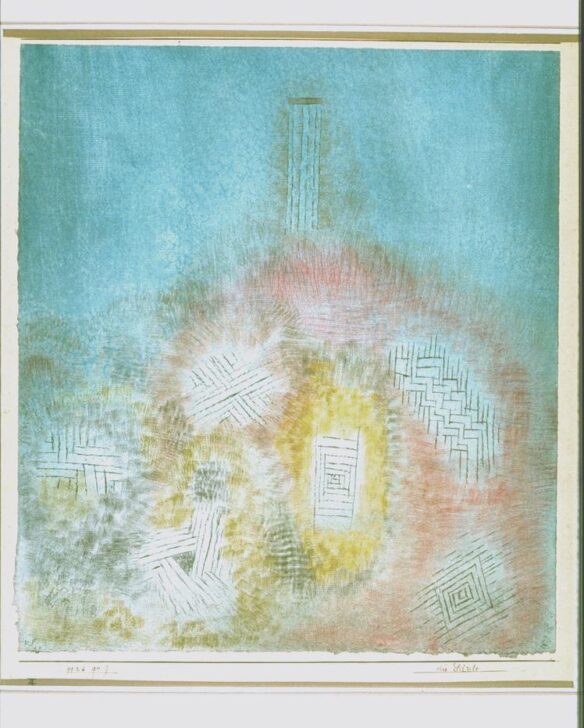Die Säule [The Piillar]
Paul Klee

Description
March 28, 2009
From 1921 until 1931, Klee was an instructor at the Bauhaus, the influential school of modernist art and design established in 1919 by the German architect Walter Gropius to foster “a reunion between creative arts and the industrial world.” In both his art and pedagogy, Klee championed a practice of “intuition joined to research,” through which the artist reveals the fundamental qualities of materials, forms, and processes. “Art does not represent the visible,” he wrote, “rather, it makes visible.”
Although Klee’s more metaphysical tendencies—he described the art of children and the insane, for instance, as achieving a “direct spiritual vision”—were not always in agreement with the school’s increasingly rationalist approach, he was keenly analytical in his formal investigations. This tension between reason and emotion may be seen in The Column’s contrapuntal interplay of geometric pattern and sensuous, atmospheric color. A talented violinist himself, Klee viewed composers such as Bach and Mozart as the pinnacle of musical abstraction.
Subject Matter:
nonrepresentational drawing of a cluster of geometric motifs topped with a pillar
Physical Description:
watercolor and ink on paper
Usage Rights:
If you are interested in using an image for a publication, please visit https://umma.umich.edu/request-image/ for more information and to fill out the online Image Rights and Reproductions Request Form.